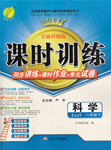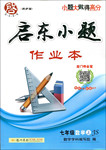
Ⅱ 语言知识及应用(共两节,满分35分)
完形填空(共10小题;每小题2分,满分20分)
阅读下面短文,掌握其大意,然后从21-3各题所给的A、B、C和D项中,选出最佳选项,并填写在答题卡上将该选项涂黑。
Every country has its own culture.
Even though each country uses doors. .Doors many have_ 21 __functions and purposes which lead to ___22__ differences.
When I first came to America, I noticed that a public building had two different__23___ and they had distinct functions. You have to push the door with the word “PUSH” to go out of the building and to pull the door with the word “PULL” to_ 24____the building. This was new to me, because we use the ____25__ door in south Korea. For quite a few times I failed to go out of a shopping centre and was embarrassed.
The way of using school bus doors was also ____26__ to me .I used to take the school bus to classes. The school decided that when the driver opened both the front and back doors, ___27 _who were getting off the bus should get off first , and students who were getting on should get on __ 28_ . In south Korea, we do not need to wait for people to get off. One morning, I hurried to the bus ,and when the bus doors opened, I___ 29____tried to get on the school bus through the front door. All the students around looked at me, I was totally_ 30 _ _,and my face went red.
21. A.different B.important C.practical D.unusual
22. A.national B.embarrassing C.cultural D.amazing
23. A.exits B.entrances C.signs D.doors
24.A.enter B.leave C.open D.close
25. A.main B.same C.front D.back
26.A.annoying B.hard C.satisfying D.strange
27.A.parents B.students C.teachers D.drivers
28.A.sooner B.later C.faster D.earlier
29.A.politely B.patiently C.unconsciously D.slowly
30.A.embarrassed B.annoyed C.unsatisfied D.excited
21-25ACDAC 26-30DBBCA
【语篇解读】作者刚到美国,发现美国建筑物的门和校车上下车的习惯都与韩国不同,
常常因弄错而令他尴尬不已。由此总结出“每个国家都有自己的文化”的观点。
21. 根据“Even though each country uses doors”可判断,这里应该表示门有不同的功能和目的,故选A项。B项意为“重要的”,C项意为“实用的”,D项意为“不同寻常的”,均不符合语境。
22.这里是定语从句,由前面的“不同功能和目的”及文章开头的“每个国家都有自己的文化”可知应为“文化差异”,故选C项。A项意为“国家的”,B项意为“令人尴尬的”, D项意为“令人惊讶的”,均不符合语境。
23. 根据下文中的“PUSH”和“PULL”可知为两个“标记”,故选C项。其余三项为“出口”,“入口”和“门”,均不符合语境。
24. 对应前面“PUSH”为“出门”,那么这里“PULL”一定是“进门”,故选A项。其他三项均不符合语境。
25. 根据“This is new to me”可知在韩国进出是一扇门,故选B项。
26. 上文中“进门”“出门”对于来自韩国的作者来说是“陌生的,不熟悉的”,这里用了“also”,可知也是一样的,故选B项。A项意为“令人恼怒的”,B项意为“困难的”, C项意为“令人满意的”,均不符合语境。
27. 这是校车,下文说学生上车,这里也应该是学生下车,故选B项。其他均不符合
语境。
28. 根据前面“first(先上车)”,故这里应用“later(后上车)”相对应,故选B项。
29. 由于韩国没有这种规定,故作者不等别人下车就急着上车是“无意识的行为”,而非故意违反规定,应选C项。A项意为“礼貌的”,B项意为“耐心的”, D项意为“慢慢的”,均不符合语境。
30. 其他学生都盯着他看,他的脸红了,应该是“感到难为情”,故选A项。B项意为“恼怒的”,C项意为“不满的”, D项意为“激动的”,均不符合语境。


 课时训练江苏人民出版社系列答案
课时训练江苏人民出版社系列答案 黄冈经典趣味课堂系列答案
黄冈经典趣味课堂系列答案 启东小题作业本系列答案
启东小题作业本系列答案科目:高中英语 来源:广东省兴宁市第一中学2009---2010学年度高一下学期5月月考英语试题 题型:完型填空
二.语言知识及应用 (共两节,满分60分)
第一节完形填空 (共15小题;每小题2分,满分30分)
阅读下面短文,掌握其大意,然后从11—25各题所给的A、B、C和D项中,选出最佳选项。
Students will need to use all of their skills in order to understand the reading selections in Reader’s Choice.
The book 11 many types of selections on a wide variety of topics. These selections provide practice on 12 different reading skills to get the 13 of the writer. They also give students 14 in four basic reading skills: skimming, scanning, reading for 15 comprehension, and critical reading. E:\Zujuan\WCFUpload\Upload\2010-05\06\Local Settings\Temp\Rar$DI00.140\www.canpoint.cn\
Skimming involves reading quickly through a text to get an overall idea of its contents. This kind of rapid reading is 16 when you are trying to decide if careful reading is desirable or when there is not 17 to read something carefully.
Like skimming, scanning is also quick reading. However, in this case the search is more 18 .To scan is to read quickly in order to find out specific information. When you read to find a 19 date, or number you are scanning. E:\Zujuan\WCFUpload\Upload\2010-05\06\Local Settings\Temp\Rar$DI00.140\www.canpoint.cn\
Reading for thorough comprehension is 20 reading in order to understand the total 21 of the passage. At this level of comprehension the reader is 22 to summarize the author’s ideas but has not yet made a critical evaluation of those ideas. E:\Zujuan\WCFUpload\Upload\2010-05\06\Local Settings\Temp\Rar$DI00.140\www.canpoint.cn\
Critical reading demands (需要)that a reader 23 judgments about what he or she reads. This kind of reeding 24 posting and answering questions such as “Does my own experience support that of the author?”, “Do I 25 the author’s point of view?” And “Am I convinced by the author’s arguments and evidence?
11.A.contains B.uses C.put D.writes
12.A.making B.understanding C.speaking D.employing
13.A.message B.secret C.content D.nature
14.A.power B.point C.practice D.opinion
15.A.better B.basic C.general D.thorough(彻底的)
16.A.suitable B.interesting C.wrong D.true
17.A.interest B.habit C.time D.desire
18.A.funny B.concentrated(专心的) C.perfect D.important
19.A.common B.different C.fine D.particular
20.A.carefully B.slowly C.quickly D.perfectly
21.A.design B.explanation C.meaning D.feeling
22.A.impossible B.able C.difficult D.simple
23.A.makes B.findsE:\Zujuan\WCFUpload\Upload\2010-05\06\Local Settings\Temp\Rar$DI00.140\www.canpoint.cn\ C.puts D.offers
24.A.lacksE:\Zujuan\WCFUpload\Upload\2010-05\06\Local Settings\Temp\Rar$DI00.140\www.canpoint.cn\ B.requires C.demands D.affords(提供)
25.A.tell B.express C.share D.argue
查看答案和解析>>
科目:高中英语 来源:广东省中山一中2010届高三第八次模拟考试试题(英语) 题型:完型填空
II. 语言知识及应用(共两节,满分35分)
第一节完形填空(共10小题,每小题2分,满分20分)
阅读下面短文,掌握其大意,然后从21~30各题所给的A、B、C和D项中,选出最佳选项,并在答题卡上将该项涂黑。
At the beginning of a new year, I always ask my Chinese friends what their expectations are. I am 21 to realize that, they all dream of owning a car. Most of them 22 that sooner or later every Chinese family can acquire a car.
I don’t by any means contest the 23 of Chinese people to enjoy the same housing conditions, household appliances and other goods that are available in developed countries. But it seems obvious that many of them have related to the mass ownership of 24 autos.
I know that it’s not 25 to sacrifice our personal comfort and open our minds to consider what is good for an entire 26 , rather than just for ourselves. But I would not 27 to the further pollution of Beijing by owning a car. And if I were to return to Montreal, I would not buy a car there either.
In today’s China owning a car is seen as a symbol of 28 and success. I wish Chinese people would acquire the maturity to reject that idea, and make their 29 towards developing a good public transportation system. The country needs more trains, more buses and more subways. That is the only way to get out of the traffic 30 .
21. A. delighted B. surprised C. satisfied D. frightened
22. A. hope B. suggest C. require D. encourage
23. A. trends B. hobbies C. rights D. duties
24. A. modern B. fashionable C. public D. private
25. A. difficult B. easy C. convenient D. suitable
26. A. organization B. family C. society D. country
27. A. belong B. contribute C. stick D. devote
28. A. wealth B. glory C. treasure D. achievement
29. A. ways B. decisions C. turns D. efforts
30. A. accident B. jam C. way D. system
查看答案和解析>>
科目:高中英语 来源:广东省普宁市20092010学年高一上学期必修二水平测试试卷(英语) 题型:完型填空
第二部分语言知识及应用(共两节, 满分35分)
第一节:完形填空(共10小题,每小题2分,满分20分)
阅读下面短文,掌握其大意,然后从21—30各题所给的四个选项(A、B、C和D)中,选出最佳选项,并在答题卡上将该项涂黑。
Secondhand smoke clearly kills people and the only way to control it is to ban smoking in all workplaces, US Surgeon-General Dr Richard Carmona said.
In 1964Surgeon General’s report first laid out the 21 of smoking. Years later, in another report Dr Richard Carmona 22 the effects of secondhand smoke and said no one should be forced to inhale it.
“Secondhand smoke causes early death and disease in children and in 23 who do not smoke,” the report reads. “Children 24 to secondhand smoke are at an increased risk for sudden infant death syndrome(综合症), acute respiratory(呼吸道) infections, and ear problems,” it adds.
Smoking by 25 causes respiratory symptoms and slows lung growth in their children. A 2005 report from the US Centers for Disease Control and Prevention found that 430 26 died every year in the United States from sudden infant death syndrome-all 27 by secondhand smoke.
States, 28 and other local authorities have battled over instituting(制定)smoking bans. Some 29 , especially bars and restaurants, have said they will lose business if smoking is completely banned. But the report said it is impossible to protect non-smokers even with designated smoking areas, and at least one report from California, which has strict bans, has shown no 30 on businesses.
21.A.advantages B.dangers C.poisons D.elements
|
22.A.neglected B.gained C.detailed D.conquered
23.A.gentlemen B.mothers C.youngstersD.adults
24.A.exposed B.resisted C.reported D.invited
25.A.audiences B.authorities C.patients D.parents
26.A.teenagers B.elders C.mothers D.newborns
27.A.obtained B.created C.caused D.abandoned
28.A.countries B.cities C.schools D.businesses
29.A.stores B.headquarters C.businesses D.factories
30.A.comment B.impact C.attack D.affect
查看答案和解析>>
科目:高中英语 来源:广东省20092010学年高一下学期期末考试试题(英语) 题型:完型填空
II. 语言知识及应用(共两节,满分35分)
第一节:完形填空(共10小题;每小题2分,满分20分)
阅读下面短文,掌握其大意,然后从21-35各题所给的四个选项(A、B、C 和D)中,选出最佳选项,并在答题卡上将该项涂黑。
You need to know when the events of a text take place. This will help you to see the __21__ of the text — the reason things happen in a certain order. Some texts 22 a period of many years, like Wuthering Heights. Others go through a __23__ period of time — many poems try to capture one moment in time. Narrators (讲述者) can be immediate eyewitness, or they may be __24 the past. Some texts present two views of events: an eyewitness version, and a second version, __25__ on the same events much later. This happens in Great Expectations, where the narrator, Pip, sometimes speaks and acts like a __26__, and sometimes like a mature adult. Look out for the __27__ that the events fit together, and how they are caused. This is called the plot—the story of the text. Action in a text is either__28__, or happens by chance. Take notes on how the action is described, eg. if the tone is angry or __29__ . Try to work out how the language of the passage is being used to create the tone, the characters and the descriptions. You should also ask why the text has been written in the way it has — your notes on who, what, when, where and how will help you to 30 your own conclusions.
21. A. structure B. content C. character D. substance
22. A. contain B. discover C. cover D. hold
23. A. hard B. difficult C. long D. short
24. A. looking forward to B. looking out for C. looking back on D. looking after
25. A. relaying B. including C. writing D. reflecting
26. A. boy B. child C. girl D. student
27. A. way B. time C. place D. action
28. A. accurate B. considerate C. desperate D. deliberate
29. A. wonderful B. joyful C. thankful D. painful
30. A. hit B. come C. draw D. find
查看答案和解析>>
科目:高中英语 来源:广东省20092010学年高一下学期期末考试试题(英语) 题型:完型填空
II. 语言知识及应用(共两节,满分35分)
第一节:完形填空(共10小题;每小题2分,满分20分)
阅读下面短文,掌握其大意,然后从21~30各题所给的A、B、C和D项中,选出最佳选项,并在答题卡上将该项涂黑。
Have you ever simply wanted to give without expecting anything in return? It’s 21 to do. Most look for a reward in some way. I know I did, most of the time, but then a TV program of “Oprah” inspired me. She gave everyone in the audience $1,000 to spend on a complete__22__, accompanied by a video camera to ___23 __ what they did with the money.
Two sisters from Georgia 24___ from the crowd in my mind---they put their money together to give to “My sister’s House”, a 25 ___ that helps battered(受虐的) women and children. Not only did they 26 ___ their money, but they told everyone in their town about the organization. It was amazing that people were crazy to ring and 27 ______money, baby clothing, and more.
This story made me realize how often I expect things from others and how 28______ I give things in return. I don’t have a thousand dollars to spend on a stranger, but I do have a heart that is full of love and generosity. I now hold doors open for others and 29__ __ at people I don’t know, because a smile is contagious(有感染力的) and I try to bring as much happiness as I can into others’ lives. It’s difficult, but I feel it is really ___30 ____.
21. A. hard B. easy C. simple D. hardly
22. A. countrymen B. stranger C. acquaintance D. friend
23. A. show B. record C. learn D. praise
24. A. stood up B. stood out C. stood by D. stood for
25. A. room B. house C. village D. shelter
26. A. spend B. divide C. combine D. separate
27. A. give B. bring C. donate D. take
28. A. often B. really C. simply D. rarely
29. A. sing B. cry C. smile D. laugh
30. A. rewarding B. awarding C. expecting D. giving
查看答案和解析>>
湖北省互联网违法和不良信息举报平台 | 网上有害信息举报专区 | 电信诈骗举报专区 | 涉历史虚无主义有害信息举报专区 | 涉企侵权举报专区
违法和不良信息举报电话:027-86699610 举报邮箱:58377363@163.com